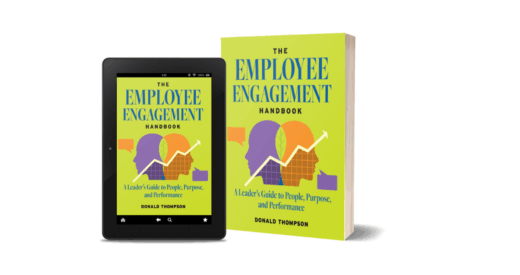A statement by The Diversity Movement
Harvard University recently released a 134-page report on the school’s historic ties to slavery. The report, authored by the Committee on Harvard & the Legacy of Slavery, details Harvard’s – and New England’s – legacy of slavery in full, before diving into recommendations to rectify the past. As part of an effort to rectify the past, the University has pledged $100 million to fund ongoing research and programming, including fostering partnerships with Historically Black Colleges and Universities (HBCUs), erecting memorials to people who were enslaved at Harvard, and tracing descendents of those individuals.
The report and pledge has been received positively by most – after all, it represents one of the largest efforts ever to reckon racial injustice on college campuses. However, some folks view it as too little too late and have pointed out that $100 million represents only 0.19% of Harvard’s total endowment.
At The Diversity Movement, we recognize Harvard’s in-depth research, transparent report, and financial commitment to be a step in the right direction. In fact, Harvard is taking many of the same steps that we recommend to our clients. For example, one of our first recommendations to clients, regardless of their industry, is to partner with HBCUs and other minority-serving institutions. Organizations can diversify their talent pipelines through these partnerships, while educational institutions can create exchange or mentorship programs.
What We’re Seeing in Higher Ed
Across our client spectrum, we’ve learned that one of the largest barriers to change is the fear of seeming performative or inauthentic. University presidents and other executive administrators are often criticized for their lack of true commitment, empty promises, or inability to understand the problems wholeheartedly, especially as many of these roles are still filled by White men.
In our client engagements with organizations in higher education in particular, we have found that media training makes a critical difference when developing and announcing strategies for change. As important as it is for universities and colleges to face their own histories, it is equally important that administrators and executives are able to communicate strategic plans for moving forward with optimism, authenticity, and courage.
A University Problem
Clearly, Harvard is not the only higher-education institution grappling with their past. For instance, Rutgers University was built with slave labor, and Sojourner Truth herself was enslaved by family members of Rutger’s first president. The famous Duke Chapel was built by a Black architect who was not allowed to ever enter the building he constructed. Princeton’s first nine presidents were slave owners, and many of its professors also enslaved people. And Georgetown University paid off university debts by selling over 200 slaves.
This isn’t a Harvard problem. It’s a university problem, albeit concentrated heavily amongst Northeast and Southern institutions, in part because they are some of the oldest organizations in America.
Not Just Slave Labor
As Harvard moved throughout the research process, focusing first on how the university benefited from slave labor, they found the problem was far more extensive. Harvard had also participated in and promoted “race science” – the idea that people from different races can be clearly distinguished on a biological level – an assertion which has been proven false time and time again. They also collected human anatomical specimens, including the bodies of enslaved people, to prove the superiority of the White race.
Another startling figure from the report shows that, in the 50 years between 1890 and 1940, long after slavery was abolished, only 160 total Black students attended Harvard University. And in 1960, Black students accounted for only 0.7% of the incoming first-year class. Luckily, the class of 2025, which is currently enrolled in the University, indicated much improvement, with 18% identifying as Black or African American.
Apologize, Fix It, and Move Forward
To continue promoting educational equity, Harvard plans to expand their existing collaborations with HBCUs, specifically that “Harvard encourage and fund summer, semester, or yearlong visiting appointments to Harvard by interested faculty from HBCU partner institutions and similar visiting appointments by Harvard faculty to HBCU partners [and also] encourage and subsidize summer, semester, or yearlong visits to Harvard by interested students who are juniors at HBCU partner institutions and by interested Harvard students in their junior years to HBCU partners.” Similarly, Harvard is planning to collaborate with tribal colleges, by providing “financial support for research, dissemination of knowledge, [and] recruitment of students from tribal communities.”
We applaud these first steps as a path to greater diversity, equity, and inclusion, and we note that Harvard is following the advice we often give to individuals and organizations who are coming to terms with their imperfect diversity and inclusion efforts. Be transparent, and model a growth mindset. In other words, when you know you’ve made a mistake, apologize, fix it, and move forward.
Harvard is Not Unique
If your institution was founded before the 1950s, you probably need to take a look at who built your campus, and concurrently, who the university has chosen to name the buildings, streets, monuments, and arenas after. Odds are good that these structures aren’t named after the people who built them and that the people who did that work were never compensated or acknowledged for their efforts. Often, they’re named after people who profited off the free labor of involuntary workers.
And here is the key takeaway.
Reckoning with your past doesn’t mean tearing down the history of your organization; it means expanding that history to include people who have been ignored and erased. And it means coming to terms with your institution as one of hundreds that used the labor of enslaved people, thereby promoting slavery as an institution whether consciously or unintentionally. The good news is that you are certainly not alone. Many organizations are facing the same realizations and finding ways to move forward.
We’re proud to partner with higher education institutions who are committed to change to design insights reports and action plans, implement change, and provide the media training executives need to feel confident and comfortable facing the press with authenticity. We’re especially proud of our current clients’ hard but necessary work so far.
To learn more about our client engagements, download our 2021 Client Insights Report and join our DEI Navigator subscription service to receive custom, expert, one-on-one guidance, whenever and wherever you need it.
Connect with our team to get started.






